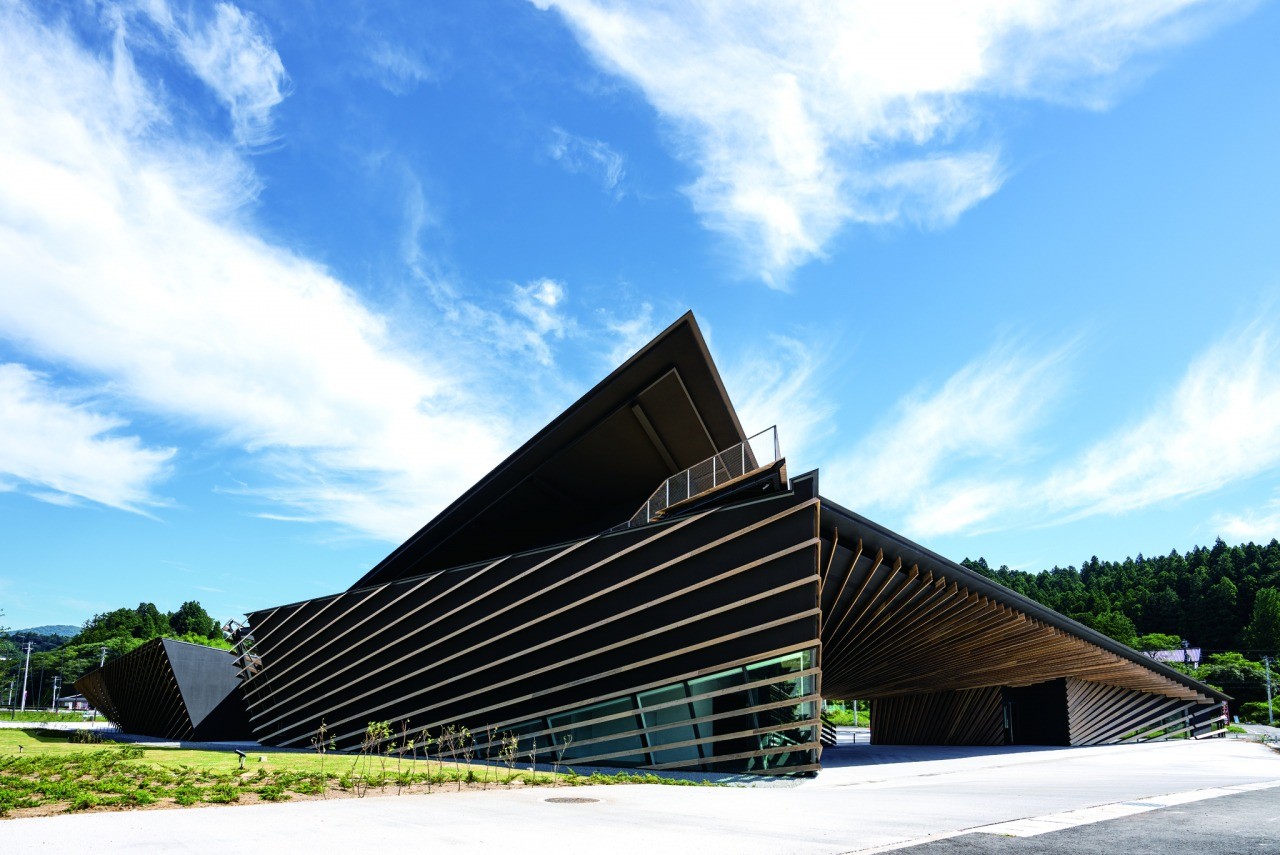Minamisanriku 311 Memorial
Opened in October 2022, this facility is the culmination of the town’s reconstruction efforts and was developed as a place to reflect on disaster prevention.

Opened in October 2022, this facility is the culmination of the town’s reconstruction efforts and was developed as a place to reflect on disaster prevention. The grand design for the river district and memorial has enlisted the renowned architect Kengo Kuma since 2013. Located on the north side of the Minamisanriku SANSAN Shopping Village, which opened first in 2017, the memorial is situated across the road from Nakabashi Bridge. Its unique L-shaped building, designed to resemble a ship, with a jutting roof as the bow, uses locally-sourced Minamisanriku cedar for wooden slats that adorn the exterior. With the Minamisanriku 311 Memorial at the center, the building to the right is JR Shizugawa Station, and the building to the left is the Minamisanriku Portal Center, a hub for tourist information. The grand design for this area reconnects it to the sea and land.
At the entrance to the memorial, visitors are presented with an overview of the Great East Japan Earthquake before entering the Exhibition Gallery, an area for firsthand accounts from residents. The next section is the Art Zone, which features an installation by the French contemporary artist Christian Boltanski. The adjacent space is the Learning Theater, where visitors can watch videos of disaster survivors telling their stories and can participate in an experiential program that encourages each person to think about how they would have thought and acted had they been there. The regular program takes about 60 minutes and a short version takes about 30 minutes (including the museum tour). The last areas are free admission zones—the community-oriented Open Square and the rooftop Observatory, from which the ocean can be seen.
The learning programs and contemporary artwork preserve the memory of the natural disaster in Minamisanriku Town for future generations and offer an opportunity to reflect on life, nature, and humanity. Workshops are also held for educational trips and group training sessions (reservations required).Languages available: English, Chinese (traditional)
• The learning program is available with subtitles in English and Chinese (traditional). Reservations are required.
• Some exhibits can be switched to English (scan QR code).
At the entrance to the memorial, visitors are presented with an overview of the Great East Japan Earthquake before entering the Exhibition Gallery, an area for firsthand accounts from residents. The next section is the Art Zone, which features an installation by the French contemporary artist Christian Boltanski. The adjacent space is the Learning Theater, where visitors can watch videos of disaster survivors telling their stories and can participate in an experiential program that encourages each person to think about how they would have thought and acted had they been there. The regular program takes about 60 minutes and a short version takes about 30 minutes (including the museum tour). The last areas are free admission zones—the community-oriented Open Square and the rooftop Observatory, from which the ocean can be seen.
The learning programs and contemporary artwork preserve the memory of the natural disaster in Minamisanriku Town for future generations and offer an opportunity to reflect on life, nature, and humanity. Workshops are also held for educational trips and group training sessions (reservations required).Languages available: English, Chinese (traditional)
• The learning program is available with subtitles in English and Chinese (traditional). Reservations are required.
• Some exhibits can be switched to English (scan QR code).
- Address
- Telephone Number
- 0226-47-2550
- Opening Times
- 9:00 a.m. – 5:00 p.m.
- Prices
- Fee required (see the facility’s website for details)
- Duration
- Notes